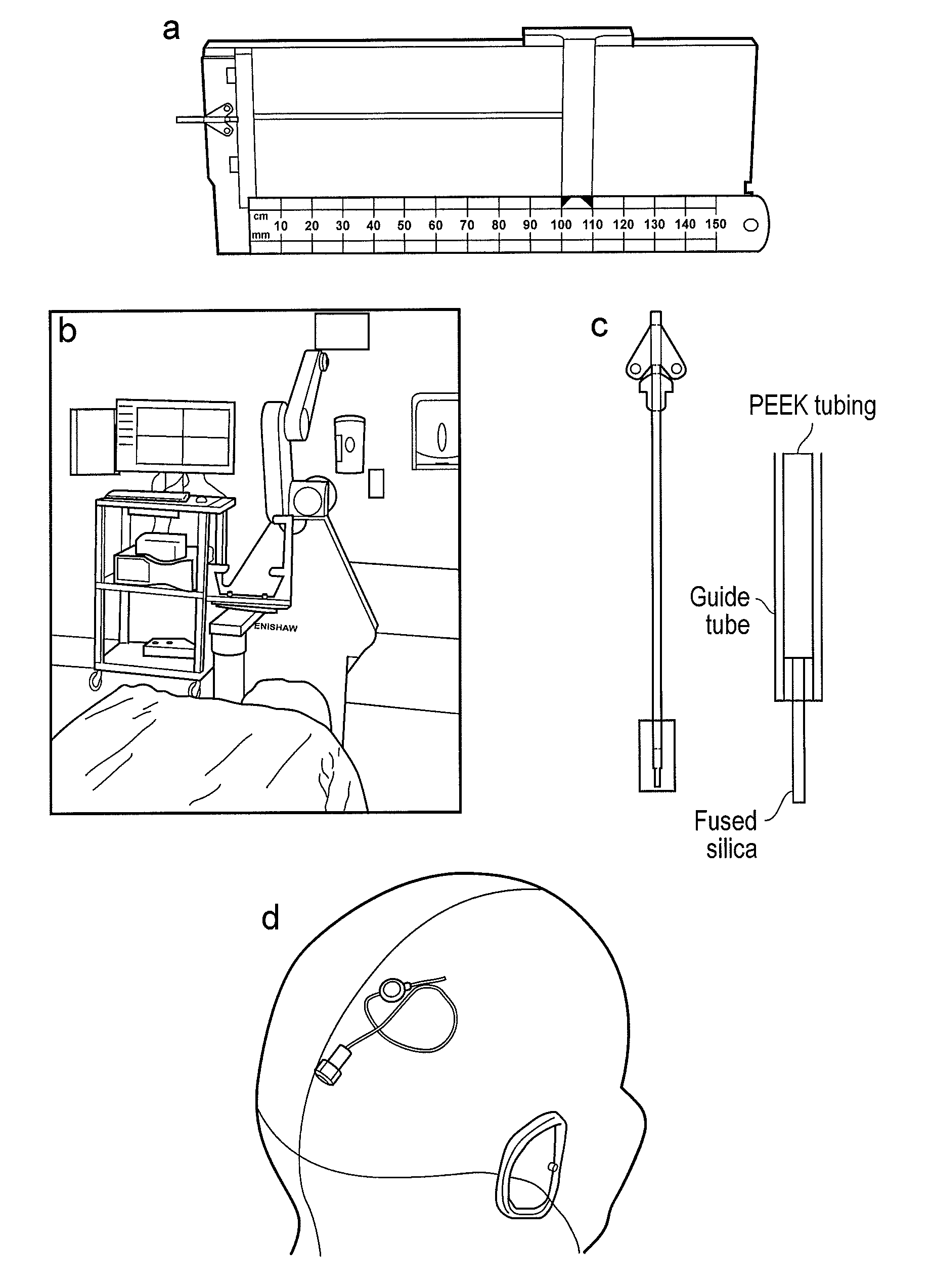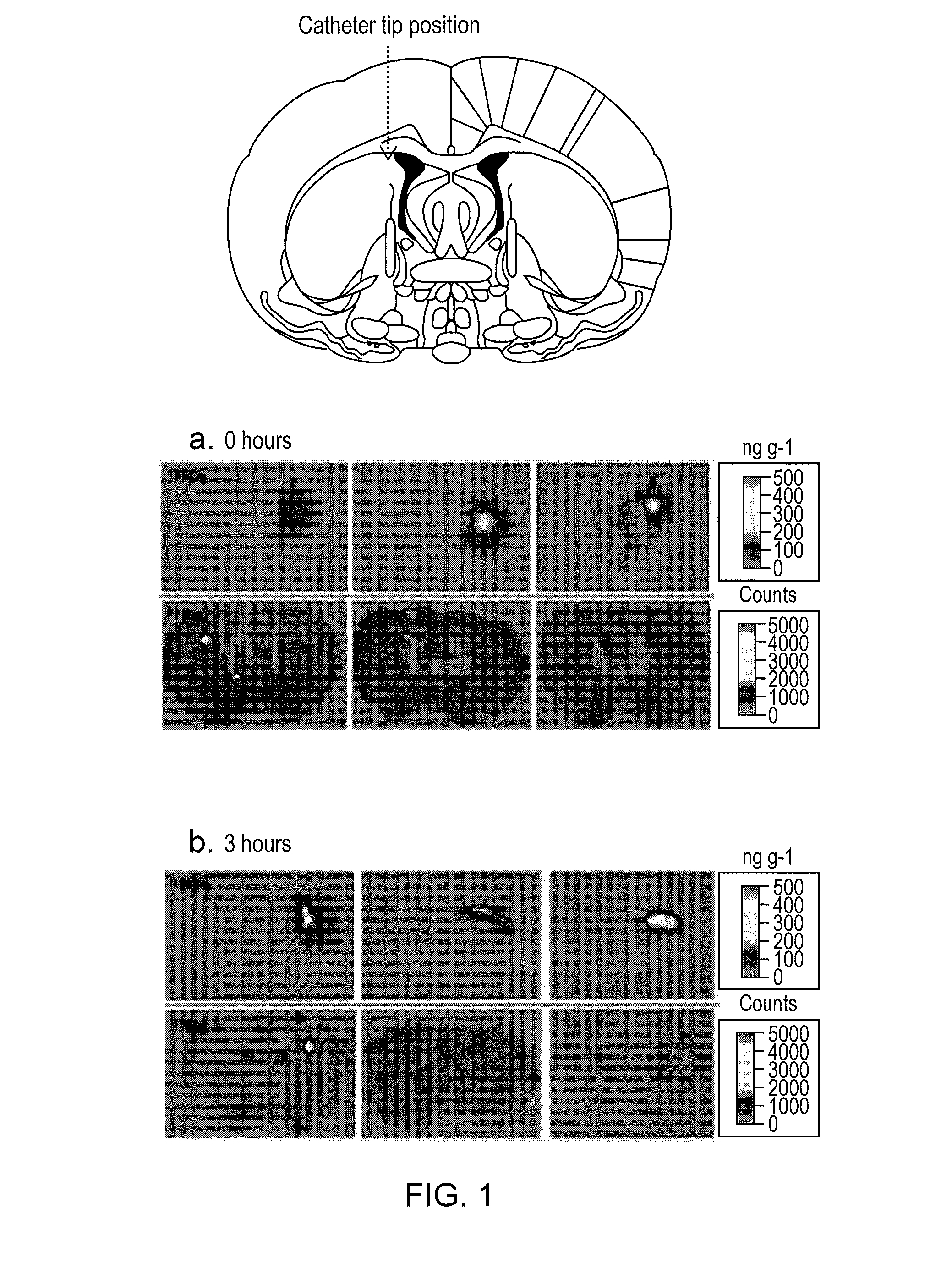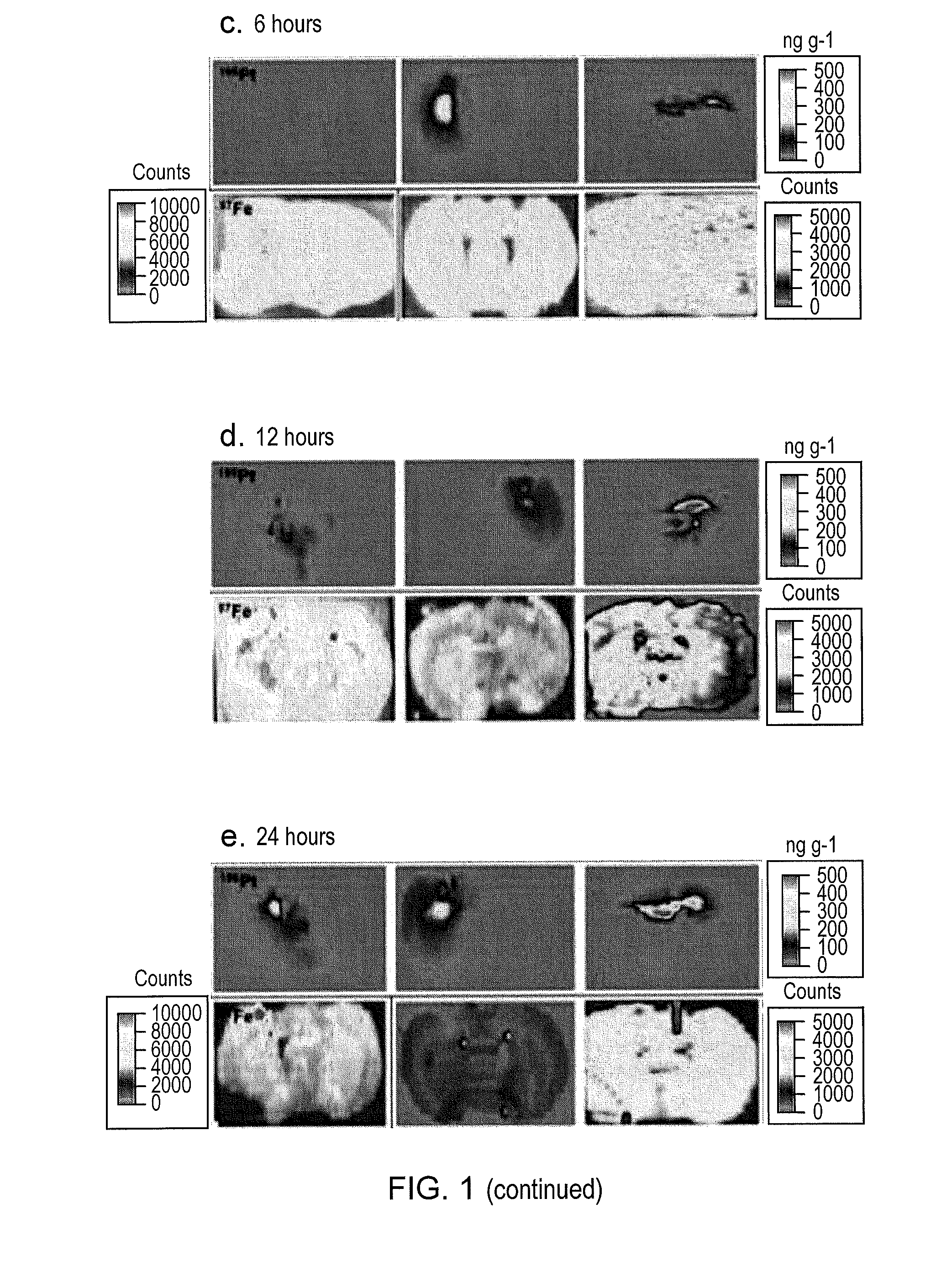Glioma treatment
a technology for gliomas and brain tumours, applied in the field of gliomas, can solve the problems of no demonstrable survival benefits for patients with recurrent gbm, many of the techniques of direct chemotherapy delivery to the brain, including gliadel wafers, are dependent on diffusion to achieve adequate spatial distribution
- Summary
- Abstract
- Description
- Claims
- Application Information
AI Technical Summary
Benefits of technology
Problems solved by technology
Method used
Image
Examples
example 2
Materials and Methods
In Vitro Studies
[0104]Cell lines were kindly provided by Geoffrey Pilkington from the Institute of Biomedical and Biomolecular Sciences at Portsmouth University, UK. The cell lines used in this study were SNB19 (P20-P45) and UPAB (P20-P45).
MTT Cytotoxicity Assay:
[0105]Briefly, SNB19 and UPAB glioma cells were plated at 1×104 / well in a 24-well plate. Cells were treated 72 hours later with Carboplatin at the following concentrations: 0.06 mg, 0.12 mg, 0.18 mg, 0.24 mg, 0.3 mg, 0.36 mg, and 0.6 mg (TEVA, UK) for 24, 48, 72, or 96 hours. Each concentration was repeated 4 times. Carboplatin was diluted in phosphate buffered saline (PBS; Sigma Aldrich, UK) and added to 0.5 mL culture media. PBS was used as a negative control and Puromycin dihydrochloride (10 μg / mL; Sigma Aldrich, UK), which inhibits cell growth by preventing protein synthesis, was used as a positive control. Following the incubation period, culture media was changed. Then 5...
example 3
[0131]The toxicity of carboplatin was analysed by measuring the levels of synaptophysin in the brain. A reduction in synaptophysin is indicative of toxicity and was observed at 0.72 mg / ml carboplatin but not at 0.36 mg / ml (FIG. 6).
[0132]Brain tissue homogenates were prepared from dissected samples of unfixed frozen hemispheres from rats at 72 hours after infusion of either artificial CSF (control) or carboplatin at concentrations of 0.36 and 0.72 mg / ml. Tissue samples incorporating the overlying cerebral cortex (approximately 200 mg) were dissected and homogenised for 75 s using a Precellys 24 automated tissue homogeniser (Stretton Scientific) with 2.3 mm silica beads (Biospec) in 1% SDS, 10 mM tris base (pH 6.0), 0.1 mM sodium chloride, and the protease inhibitors aprotinin (1 μg / ml; Sigma) and PMSF (10 μM; Sigma). The resultant crude tissue homogenates were centrifuged at 13,000 rpm for 15 min at 4° C., and the supernatants aliquoted and stored at −80° C.
[0133]Ninety-six-well plat...
example 4
History
[0134]A 5 year-old boy presented with a 1 month history of unsteady gait, intermittent diplopia and swallowing difficulty. Contrast magnetic resonance imaging (MRI) revealed a large mass lesion expanding the pons and midbrain with patchy areas of enhancement extending superiorly along the right cerebral peduncle and consistent with a diagnosis of diffuse intrinsic pontine glioma. He was commenced on oral dexamethasone and then treated with a 6 week course of radiotherapy, resulting in stabilisation of his neurological condition for approximately 3 months. After this time he developed progressive left sided weakness and dysphagia requiring increases in his dexamethasone dose.
[0135]At 9 months after diagnosis, the patient's clinical status deteriorated as he developed dysphasia, progressively worsening trismus, dysphagia and lethargy. Following review by the paediatric neuro-oncology multidisciplinary team and approval from our Institutional Review Board, a decision was made to...
PUM
| Property | Measurement | Unit |
|---|---|---|
| concentration | aaaaa | aaaaa |
| flow rate | aaaaa | aaaaa |
| concentration | aaaaa | aaaaa |
Abstract
Description
Claims
Application Information
 Login to View More
Login to View More - R&D
- Intellectual Property
- Life Sciences
- Materials
- Tech Scout
- Unparalleled Data Quality
- Higher Quality Content
- 60% Fewer Hallucinations
Browse by: Latest US Patents, China's latest patents, Technical Efficacy Thesaurus, Application Domain, Technology Topic, Popular Technical Reports.
© 2025 PatSnap. All rights reserved.Legal|Privacy policy|Modern Slavery Act Transparency Statement|Sitemap|About US| Contact US: help@patsnap.com



